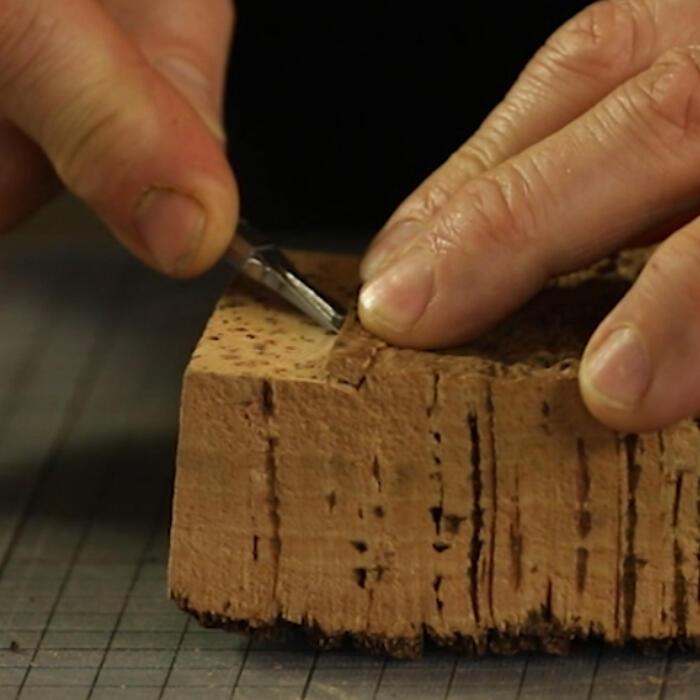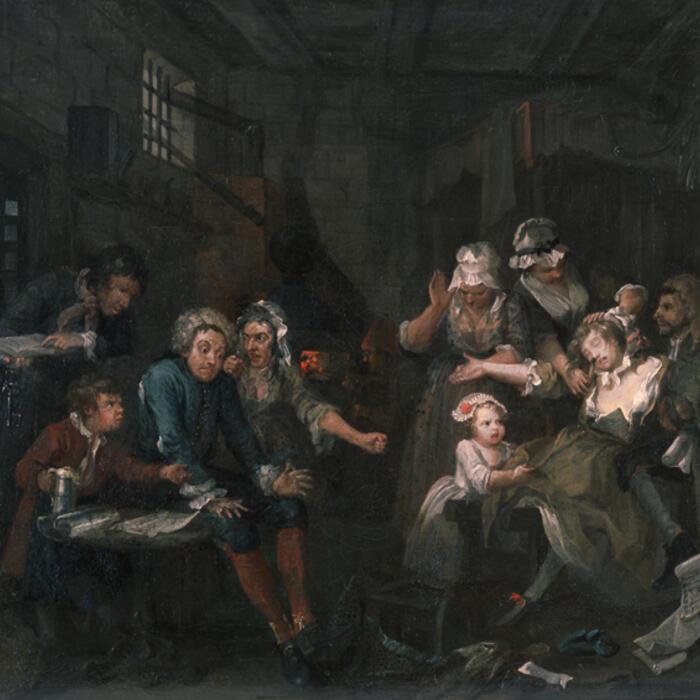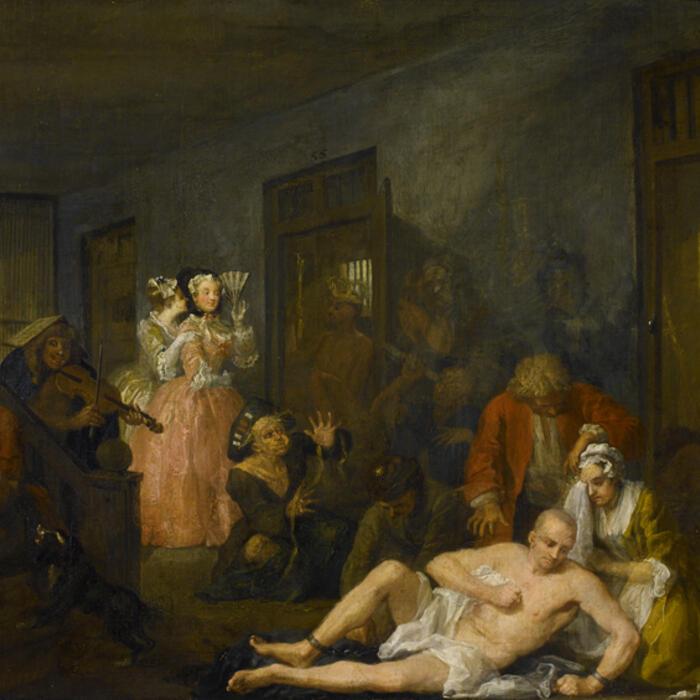Search results
Researching how the model would have looked Back to top
Restoring the stand to its original size required the recreation of the lost part of the Pompeii model, in cork on a timber base. There was just one man in the world still producing high-quality cork models exactly like those produced for the Grand Tourists of the 18th century – Dieter Coellen, based in Germany.
However, the Museum needed not only someone skilled in the lost art of cork model-making but also someone to provide the necessary information about precisely what should be modelled. A detailed engraving of the Model Room from c.1835 provided a starting point, along with two plans of Pompeii in 1820 that Soane acquired with the model, but the Museum team brought in Professor Valentin Kockel, one of the world’s foremost experts on cork models but also, by great good fortune, an archaeologist based in Germany who has spent many years studying and working at Pompeii, Dieter. The two worked together on the detailed design for the new half of the model to ensure that it was as accurate and close to Soane’s original as possible.
Making the cork model Back to top
The making of a cork model begins with a solid cork block, the bark from a cork oak tree, which on the outer side is pitted with holes (this is the part from which corks for wine bottles are cut) but which on the inner side is much denser and smoother.
This inner part, which Dieter calls ‘the filet’, is very fine, almost like leather, and is the part primarily used for modelling. Working with it requires very sharp tools and great skill but it is easy to cut with fine tools, as Dieter demonstrates. It took him one year to make the missing half of the cork model basing some of the details, such as tiny columns, on moulds taken from surviving originals.
As Dieter explains in the film every ancient ruin has its own emotional character and cork can beautifully express this making the viewer feel almost as if they are viewing the ruin itself. When the model was finished and installed next to the original section even Dieter was surprised by its power and the extraordinary way in which the new part blends with the old to produce the final model, looking exactly as it did in Soane’s lifetime.
You can find out more about Dieter's work on his website.
7. The Prison Back to top
Tom is now an inmate of the Fleet, London's infamous debtors' prison. Many prisoners are pursuing hapless schemes in the hope of freedom. Beside Tom lies a rejected script he has written. An older man with a beard has dropped a sheet of paper on which he has proposed a scheme for paying 'ye Debts of ye Nation' (a reference to a scheme for paying the national debt put forward by Hogarth's father). In the background another tries to make fools' gold at a forge.
Tom has sunk into despair, and is exhibiting the first signs of impending madness. The beer-boy harasses him for payment while the gaoler demands that his weekly bill is paid. Tom’s wife scolds him for having squandered her fortune.
Sarah Young, visiting with their child, has fainted from distress at the scene.
How accessible this website is Back to top
We know some parts of this website are not fully accessible:
- Most PDF documents are not fully accessible to screen reader software
- Some older videos have no captions
- Some older images have no text alternative
- HTML elements do not have lang attributes
Feedback and contact information Back to top
If you need information on this website in a different format like accessible PDF, large print, easy read, audio recording or braille:
By email: admin@soane.org.uk
By phone: 020 7405 2107
By post:
Sir John Soane’s Museum,
No. 13 Lincoln’s Inn Fields
London
WC2A 3BP
We’ll consider your request and get back to you in 30 days.
8. The Madhouse Back to top
Tom has descended into madness. He is now in Bethlem Hospital or ‘Bedlam’, as it was known.
The inmates around him – a tailor, a musician, an astronomer and an archbishop – are suffering various delusions. One man thinks he is a king, but is naked, carrying a straw crown and sceptre.
Bedlam is open to the public (as indeed it really was), and two fashionable ladies are sightseeing – for them, it’s an amusing day out, observing the poor suffering lunatics.
The ever faithful Sarah Young sits, weeping, by Tom's side.
Reporting accessibility problems with this website Back to top
We’re always looking to improve the accessibility of this website. If you find any problems not listed on this page or think we’re not meeting accessibility requirements, contact Tilly Buckroyd, Digital Communications Manager, using the contact details below.
By email: tbuckroyd@soane.org.uk
By phone: 020 7440 4271
By post:
Tilly Buckroyd
Sir John Soane’s Museum,
No. 13 Lincoln’s Inn Fields
London
WC2A 3BP
Enforcement procedure Back to top
The Equality and Human Rights Commission (EHRC) is responsible for enforcing the Public Sector Bodies (Websites and Mobile Applications) (No. 2) Accessibility Regulations 2018 (the ‘accessibility regulations’). If you’re not happy with how we respond to your complaint, contact the Equality Advisory and Support Service (EASS).
Key Stage 2 Back to top
Using Sir John Soane’s collection as a starting point, our sessions for KS2 pupils explore a wide variety of subject areas linked to the Science, History, Maths and Art curricula.
We offer a menu of five sessions: ‘Rocks and Soils’, Romans and Domes’, ‘Ancient Egyptians’, ‘Light, Shadows and Reflection’ and ‘Ancient Greeks’.
Your visit will comprise a tour of the Museum and a related activity, led by one of our specialist museum educators. We can also organise bespoke sessions depending on your requirements.
To find out more about the sessions we offer, click here.
Technical information about this website’s accessibility Back to top
Sir John Soane’s Museum is committed to making its website accessible, in accordance with the Public Sector Bodies (Websites and Mobile Applications) (No. 2) Accessibility Regulations 2018.
Compliance status
This website is partially compliant with the Web Content Accessibility Guidelines version 2.1 AA standard, due to the non-compliances and exemptions listed below.



